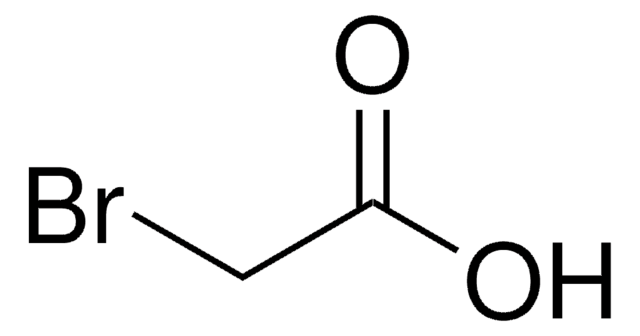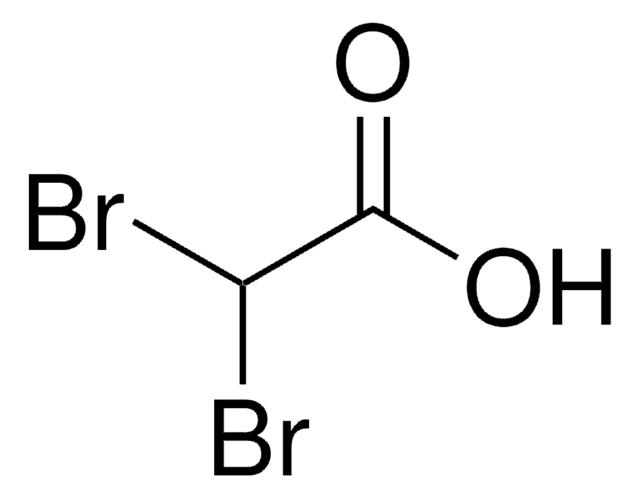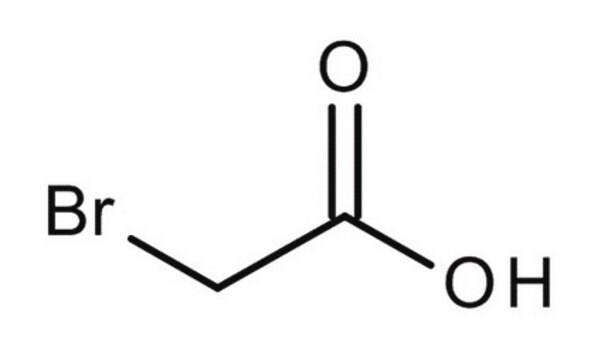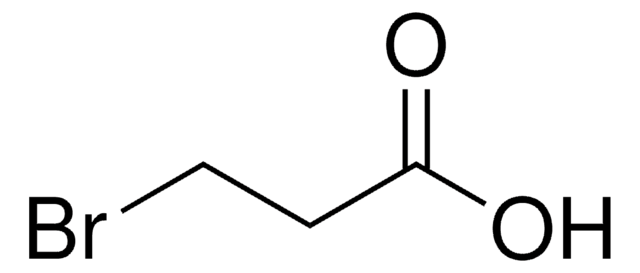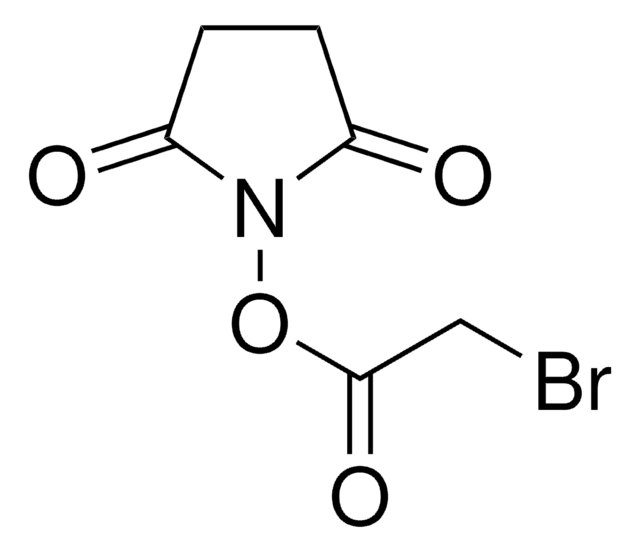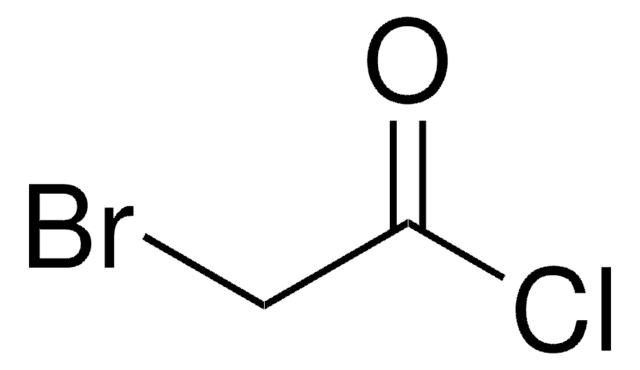17000
Acide bromoacétique
ReagentPlus®, ≥99.0%
Synonyme(s) :
α-Bromoacetic acid, Monobromoacetic acid
About This Item
Produits recommandés
Qualité
reagent
Niveau de qualité
Gamme de produits
ReagentPlus®
Essai
≥99.0% (GC)
≥99.0%
Forme
solid
Impuretés
≤1% dibromoacetic acid (1H-NMR)
pb
208 °C (lit.)
Pf
46-49 °C
47-49 °C (lit.)
Solubilité
chloroform: 10%, clear, colorless
Groupe fonctionnel
bromo
carboxylic acid
Chaîne SMILES
NC(=O)C=C
OC(=O)CBr
InChI
1S/C2H3BrO2/c3-1-2(4)5/h1H2,(H,4,5)
Clé InChI
KDPAWGWELVVRCH-UHFFFAOYSA-N
Vous recherchez des produits similaires ? Visite Guide de comparaison des produits
Application
It can also be used:
- To synthesize (Z)-2-(cyclooct-4-en-1-yloxy)acetic acid.
- To synthesize α-bromo-phenylacetamide.
- To convert aromatic thiosemicarbazones to thiazolylhydrazones.
Informations légales
Produit(s) apparenté(s)
Mention d'avertissement
Danger
Mentions de danger
Classification des risques
Acute Tox. 2 Oral - Acute Tox. 3 Dermal - Acute Tox. 3 Inhalation - Aquatic Acute 1 - Eye Dam. 1 - Skin Corr. 1A - Skin Sens. 1
Code de la classe de stockage
6.1A - Combustible acute toxic Cat. 1 and 2 / very toxic hazardous materials
Classe de danger pour l'eau (WGK)
WGK 3
Point d'éclair (°F)
235.4 °F - closed cup
Point d'éclair (°C)
113 °C - closed cup
Équipement de protection individuelle
Eyeshields, Faceshields, Gloves, type P3 (EN 143) respirator cartridges
Faites votre choix parmi les versions les plus récentes :
Déjà en possession de ce produit ?
Retrouvez la documentation relative aux produits que vous avez récemment achetés dans la Bibliothèque de documents.
Les clients ont également consulté
Notre équipe de scientifiques dispose d'une expérience dans tous les secteurs de la recherche, notamment en sciences de la vie, science des matériaux, synthèse chimique, chromatographie, analyse et dans de nombreux autres domaines..
Contacter notre Service technique